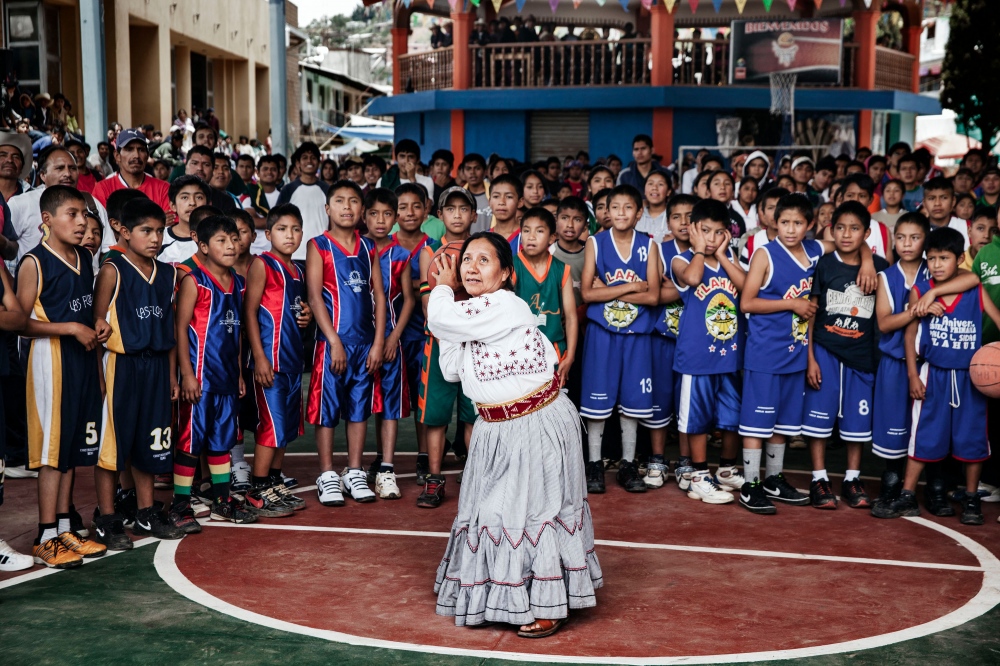Basketball culture in indigenous communities in Oaxaca, Mexico.
Unlike in wider mestizo Mexico, where soccer reigns supreme, in the Sierra basketball is king. The sport was introduced in the 1930s by president Lazaro Cardenas as a way to bring Oaxaca's disparate and historically rebellious indigenous groups into the national fold. Cardenas' dream of a unified national identity didn't take root in the Sierra, historically isolated and impoverished, but basketball soon became tied to the region's most significant traditions, and to indigenous identity itself.
Like many of my fellow villagers, I grew up idolizing the star players from my village and others, saving up money for basketball shoes, and spending most of my spare time on the basketball court which, as one of the few flat spaces in hilly and terraced Serrano villages, served not only as a site of play but also as a public gathering space.
My documentary photography project explores the way in which basketball reinforces indigenous identity. Basketball tournaments in Oaxaca Sierra Norte are the central fixture of the annual village fiesta, the single most important event in a Serrano village.
In the past, migrants would return from the United States for tournaments in their villages; but with the tightening of the U.S. border policies and the increasingly dangerous journey, most of them stopped coming back. They have, however, sustained the culture of basketball from afar. Serrano migrants in the U.S. have formed migrant organizations that send money for trophies, uniforms, prizes, entertainment, and food for the tournaments.
In 2011, when I visited the village of Lachirioag, I met two boys, ages 6 and 4, whose father – an undocumented migrant in L.A. – had sent them to Oaxaca to present the first prize check for the tournament. They had never been to Mexico. They held a giant check between the two of them and were paraded around town and celebrated in a ceremony.
At the time, I didn't realize that was the beginning of a new chapter in Serrano basketball, in which second generation Mexican Americans would start traveling back to their parents' towns to integrate basketball teams. In March of 2024, 3000 players participated in the Copa Benito Juárez – at least 200 came from different parts of the US, mainly LA.
A few days before the beginning of the tournament, I traveled to Santa María Xochixtepec with a team of six Mexican Americans from LA coached by Sarai Trinidad -the first female coach to lead a men's team in the Copa Benito Juarez. The team was warmly welcomed by nearly all of the 80 town residents with an emotional blessing ceremony in the local church, intended to wish them good luck in the town's first ever participation in the Copa Benito Juarez.

















































